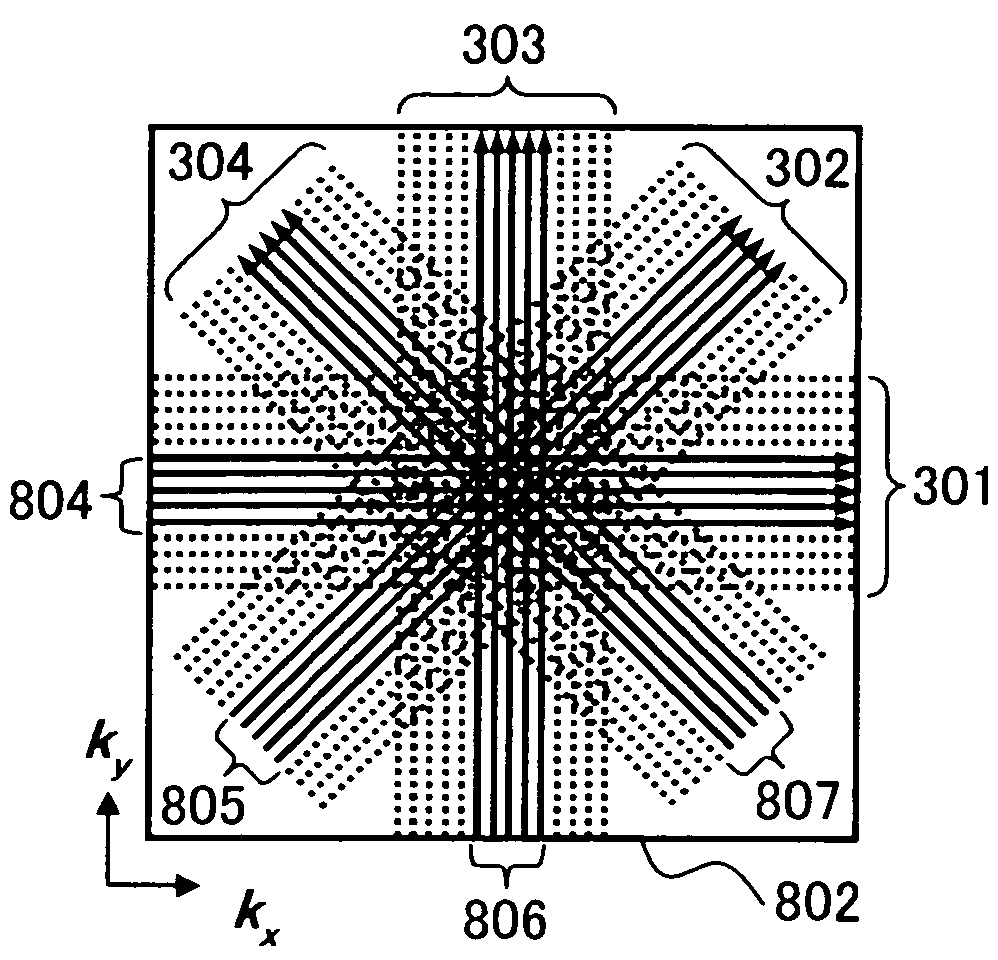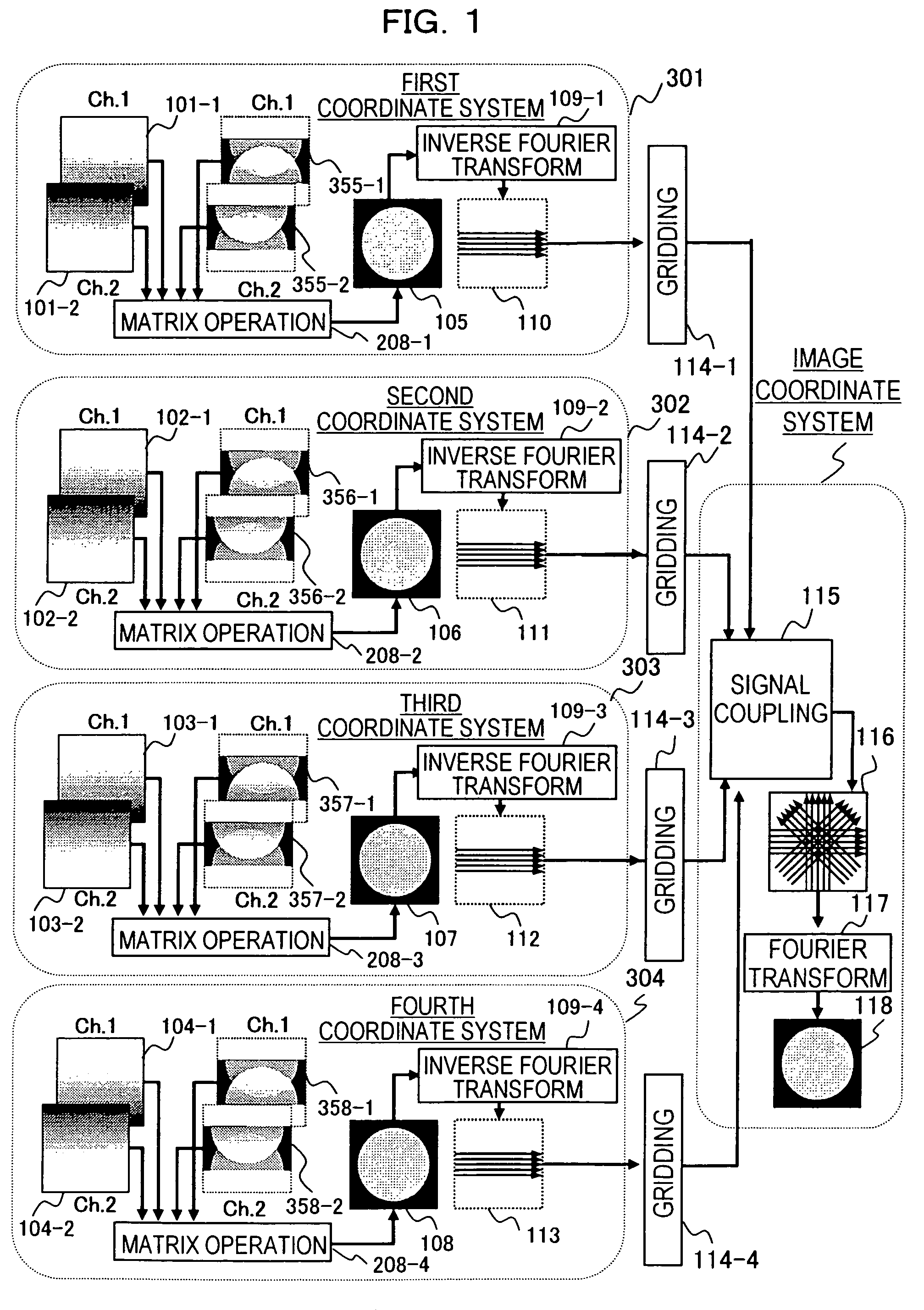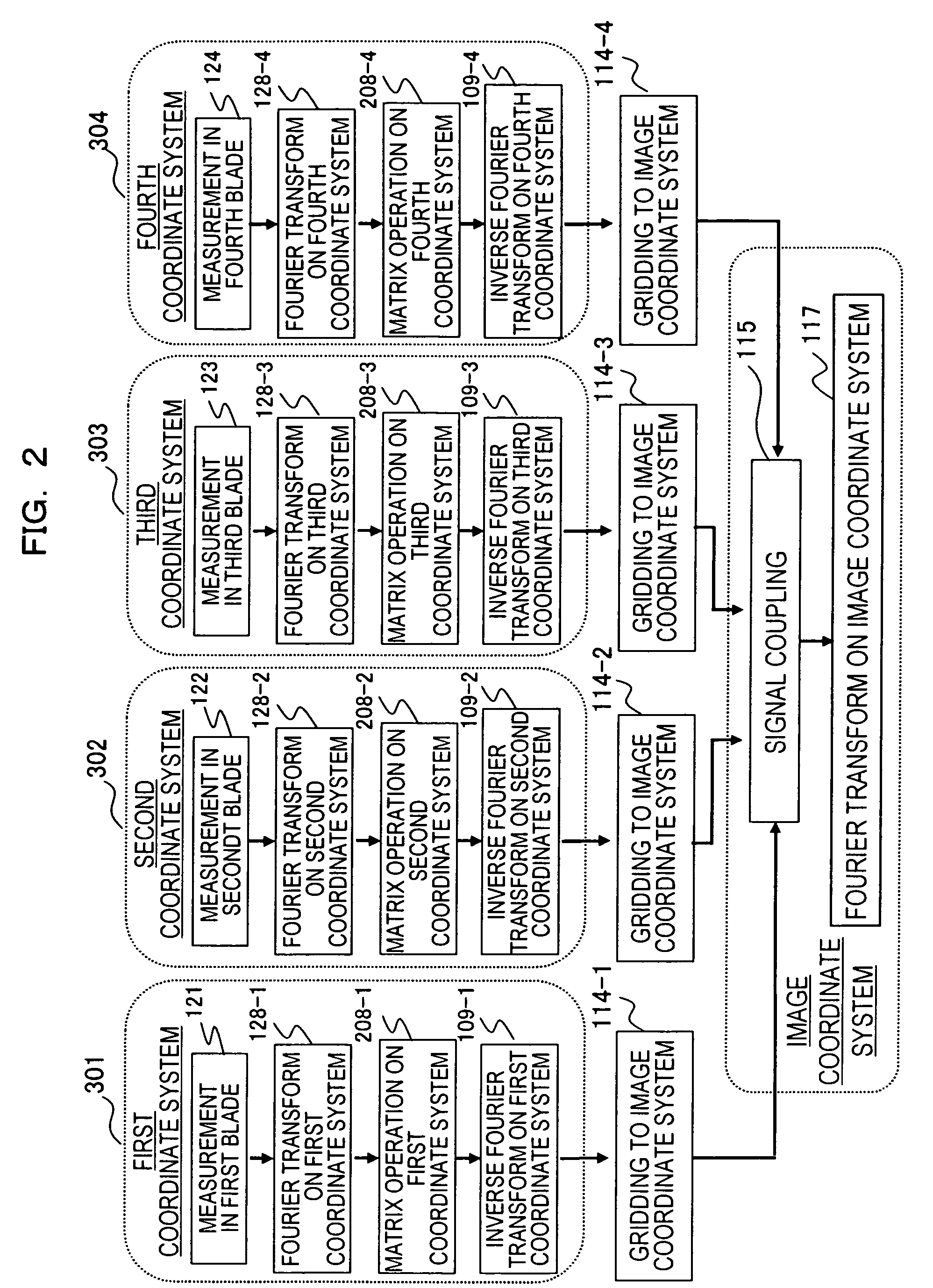Magnetic resonance imaging method and apparatus
a magnetic resonance imaging and magnetic field technology, applied in the field of magnetic resonance imaging, can solve the problems of extending the computation time considerably, and achieve the effects of fast imaging, shortening the imaging time, and fast computation
- Summary
- Abstract
- Description
- Claims
- Application Information
AI Technical Summary
Benefits of technology
Problems solved by technology
Method used
Image
Examples
first embodiment
[0076]On the basis of the principles of the PROPELLER MRI method and the parallel MRI method as above, a first embodiment of the invention will now be described with reference to FIG. 1 and FIG. 3.
[0077]For ease of description, the PROPELLER MRI method in a case where measurements are performed using four blades will be described. FIG. 3a shows the PROPELLER MRI method in a normal case where ten echo signals are acquired within each of four blades 301 through 304. In contrast, FIG. 3b shows a case where only half (five) the echo signals are acquired by setting the intensity of the phase encoding gradient magnetic field to be applied within each blade twice as high as that of FIG. 3a. Solid lines in the drawing represent echo signals that will be measured, and dotted lines represent positions of echo signals that will not be measured.
[0078]When measurements are performed in this manner, aliasing artifacts occur in an image. However, because an angle of the k-space differs from blade ...
second embodiment
[0087]A second embodiment of the invention will now be described with reference to FIG. 8. For simplicity of description, the PROPELLER MRI method in a case where the number of blades is four will be described. In this embodiment, echo signals are acquired as are shown in FIG. 8a (solid lines represent echo signals that will be measured, and dotted lines represent trajectories of echo signals that will not be measured). A difference from FIG. 3b is the number of and intervals between parallel trajectories within each blade in a k-space 801. In other words, k-spaces within the respective blades 301 through 304 are divided to low spatial frequency regions 804 through 807 and high spatial frequency regions on the outside, and phase encoding steps when acquiring echo signals in the low spatial frequency regions are made smaller (that is, denser) than phase encoding steps in the high spatial frequency regions. Conversely, phase encoding steps when acquiring echo signals in the high spati...
third embodiment
[0101]A third embodiment of the invention will now be described with reference to FIGS. 9 and 10. Because the reconstruction processing in the parallel MRI method is independent for each blade according to the method of the invention, image reconstruction processing for a given blade can be started at a time point at which echo signal data within this blade has been obtained, which enables faster imaging.
[0102]For simplicity of description, the PROPELLER MRI method in a case where measurements are performed using four blades will be described. FIGS. 9 and 10 show cases where the invention is applied to continuous imaging using the PROPELLER MRI method comprising four blades 301 through 304, and the horizontal direction indicates a time course.
[0103]FIG. 9 shows an example of a method of enhancing time resolution of each image by forming an image for each blade. As is shown in FIG. 9, because processing is performed for each of the blades 301 through 304, parallel development process...
PUM
 Login to View More
Login to View More Abstract
Description
Claims
Application Information
 Login to View More
Login to View More - R&D
- Intellectual Property
- Life Sciences
- Materials
- Tech Scout
- Unparalleled Data Quality
- Higher Quality Content
- 60% Fewer Hallucinations
Browse by: Latest US Patents, China's latest patents, Technical Efficacy Thesaurus, Application Domain, Technology Topic, Popular Technical Reports.
© 2025 PatSnap. All rights reserved.Legal|Privacy policy|Modern Slavery Act Transparency Statement|Sitemap|About US| Contact US: help@patsnap.com



